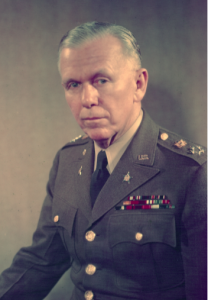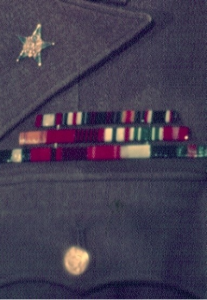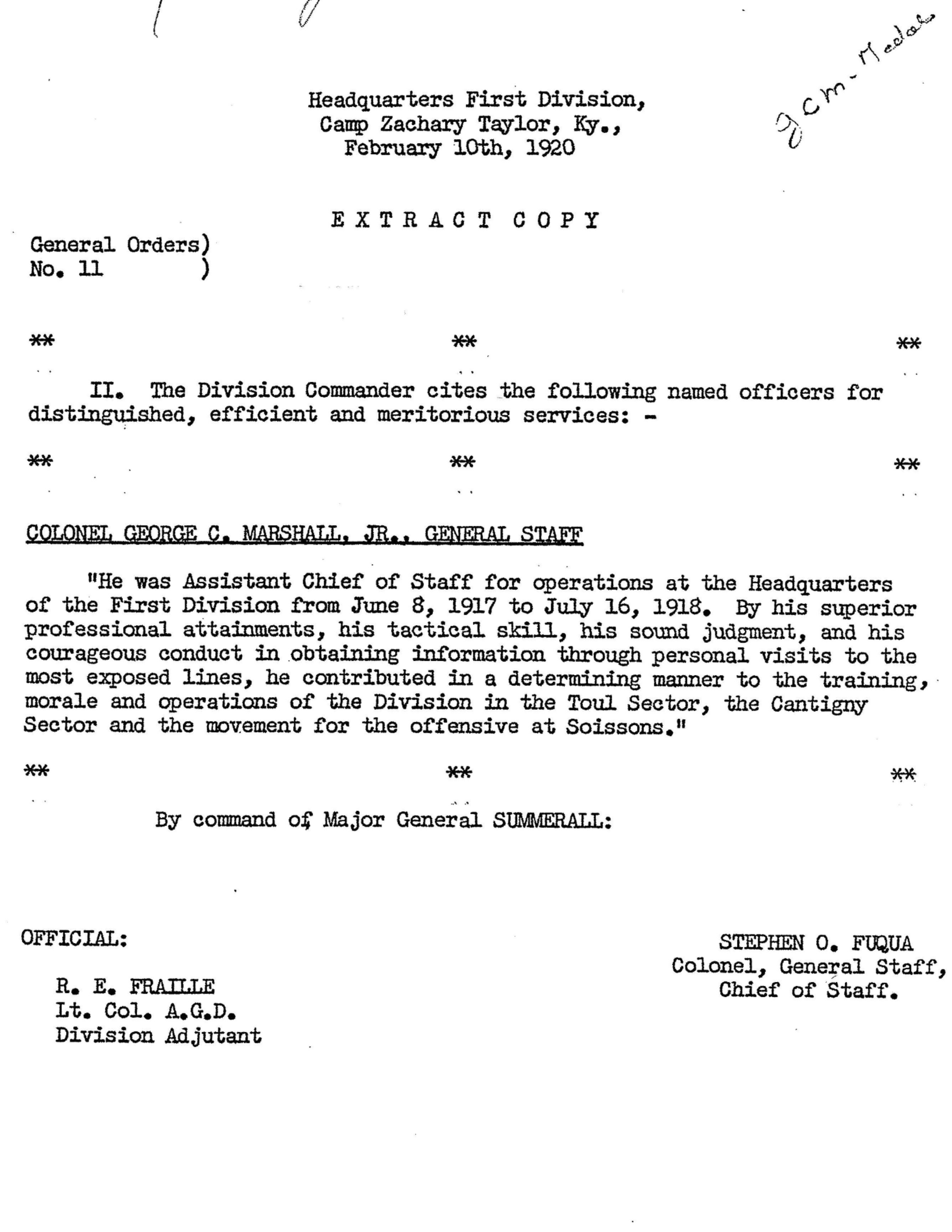George Marshall never led troops into battle, and this fact disappointed him. In World War I, though he asked to be assigned to combat troops, he was pulled from 1st Division to General Headquarters after planning the pivotal attack at Cantigny. His superiors felt that his talent for planning and logistics was more valuable on the general staff than in the battlefield.
Gen. George Marshall was Chief of Staff of the Army by the beginning of World War II, and there was of course no opportunity for him to directly lead troops. Marshall was the obvious choice to head Overlord, the invasion of Europe, but when President Roosevelt expressed discomfort at Marshall’s leaving Washington, D.C., he agreed that Eisenhower should be the Supreme Allied Commander.
It would be easy to think that Gen. George Marshall never won an award for valor.
But you would be wrong.


This photo, taken when Marshall was Chief of Staff, clearly shows the second ribbon he wears is the silver star, which is awarded for gallantry in action.
While then-Lt. Col. Marshall was assigned to 1st Division in charge of plans and operations, he planned the counterattack at Cantigny. He needed to see the terrain, so he would sneak out under cover of darkness to map the area in his head. Marshall ventured far out into no-man’s land beyond the front line, under artillery fire and risking discovery and capture by German forces. It is very likely that as a lieutenant colonel filling a slot normally held by a brigadier general, that he could have sent someone else to do this, but he didn’t.
For his actions while with 1st Division, he was awarded a silver star in February 1920.

